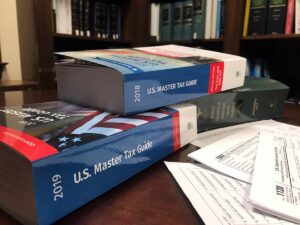The Tax Cuts and Jobs Act of 2017 (TCJA) gave us the highest estate and gift tax basic exclusion amount in history – $10 million. The exclusion amount, adjusted for inflation, was $11.4 million in 2019 and will rise to $11.58 million in 2020. Married couples can double that amount if they elect to exercise “portability” on a timely filed Estate Tax Return. The TCJA exclusion increase is temporary, however, and in 2026 the $10 million exclusion will revert back to a $5 million base.
The estate tax generally is calculated using a taxpayer’s taxable estate at death, combined with any lifetime taxable gifts. Because the increase in the basic exclusion amount is temporary, some have wondered whether taxpayers who die after 2025 will receive the full benefit of the higher exclusion. The problem can be illustrated by the following example:
Suppose an individual taxpayer gifts $11.4 million to his child today, his only taxable gift. This gift currently would be sheltered by the heightened exclusion amount and no gift tax would be due. The taxpayer then dies in 2026 with a $4 million taxable estate. The taxpayer’s total taxable estate and lifetime gifts are $15.4 million, however, only $5 million of exclusion is now available. This would result in a much higher estate and gift tax due than the taxpayer originally anticipated when he made the gift.
The final regulations issued by the IRS on November 26, 2019 resolve this “clawback” issue.[1] In calculating the credit against the estate tax, the exclusion amount used is the greater of: (1) the exclusion amount at death and (2) the exclusion amount at the time the lifetime gift(s) were made.[2] The regulations provide the following example:
An unmarried individual made cumulative taxable gifts of $9 million during his lifetime, all sheltered from gift tax by the $11.4 million basic exclusion amount on the date of the gifts. The basic exclusion amount on the individual’s death is $6.8 million. Because the total exclusion amount allowable on the dates of the gifts exceeds the $6.8 million exclusion amount allowable at the individual’s death, the exclusion amount for purposes of calculating the individual’s estate tax is $9 million.[3]
The regulations also ensure that a Deceased Spouse’s Unused Exclusion Amount (DSUE) will not be reduced when the exclusion amount decreases in 2026.[4] Accordingly, if one spouse dies in 2019 and elects portability on a timely filed Estate Tax Return, that unused $11.4 million exclusion will not be lost even if the basic exclusion amount is reduced at the surviving spouse’s death.
The result is that a taxpayer can take advantage of a fluctuating estate and gift tax exclusion during his or her lifetime, and will not be subject to estate tax simply because the exclusion is lower at death. In light of the increased exclusion amount and the recently published regulations, taxpayers should consider using their increased exclusion amount before it reverts back to $5 million in 2026.
[1] Treas. Reg. § 20.2010-1.
[2] Treas. Reg. § 20.2010-1(c).
[3] Treas. Reg. § 20.2010-1(c)(2)(i).
[4] Treas. Reg. § 20.2010-1(c)(2)(iii).


